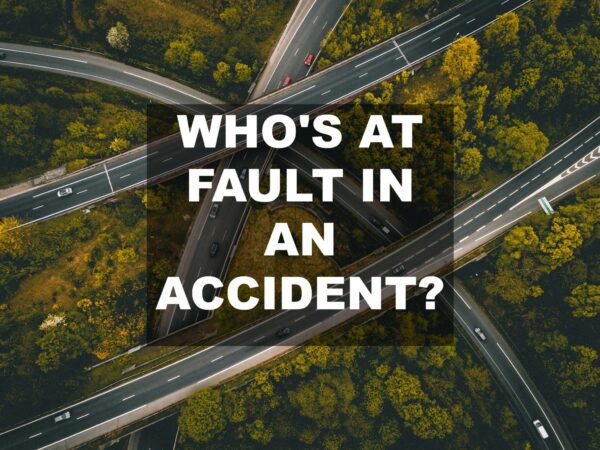
Determining who’s at fault in an accident is necessary to be awarded compensation in a personal injury claim. Not all accidents and the injuries that result from them are cut and dry. It must be proven that the liable party, the person or parties who were responsible for the accident, were legally at fault due to that person’s or party’s negligence, no matter the degree of carelessness.
Determining Legal Liability
It is a given that an accident is just that—an accident—and the majority occur due to someone’s or some party’s carelessness. Whether slipping and falling on private property or in a store, or injured on the job or in a car accident, responsibility for the accident—the negligence—must be established. One person must have been less careful than another in order for the less careful person to pay a portion of the damages to the injured, more careful party.
In some instances, the less careful party may have had a ‘duty of care’ to provide a safe environment to protect someone from injury, such as a person working at or shopping in a store. A driver may have failed to give a right of way to another driver causing an accident. In other instances, ‘reasonable care’ must be taken to avoid injuring others. Reasonable care can vary with time, place, and circumstances, but carelessness does not.
Another element in determining fault for an accident is tied to causation. More than demonstrating that you have been injured, you must be able to prove, through evidence, that the defendant caused your injury due to his or her negligence for the judge to find the defendant at fault. To prove your case you may rely on eyewitness testimony, medical documentation, video, pictures, and/or expert testimony by doctors or any specialist that can further explain how the defendant’s carelessness caused your injuries.
What About Carelessness?
No matter how an accident happens, if injured, to receive fair compensation, responsibility for the accident must be assigned. There are several ways to establish fault, with the first showing who was careless or negligent. If you’re injured, proving fault may be as simple as presenting a reasonable argument that the other party was negligent, even if there may be a plausible argument to the contrary. If you were careful and the other person was not, then the court will order the careless or negligent party to pay your injury damages.
Other circumstances in which carelessness can determine who’s at fault in an accident may vary, such as if you were injured through carelessness while employed by a company or someone else then the employer can also be liable. If the accident was a result of a hazardous condition on a property such as a broken step or poorly lit parking lot, the property owner is held liable for carelessness in maintaining the property. Negligence will hold even if the property owner did not actually create the dangerous condition. If injured due to a defective product, the manufacturer or seller of the product will be held liable even if they did not create or allow the defective product to be sold.
If your own carelessness played into the accident, such as slipping and falling while walking and texting through a grocery store aisle, your compensation can be reduced to the degree that your carelessness contributed to the accident. This is referred to as comparative negligence. In Maine, the amount of compensation will be proportionate to how much you were at fault. To receive compensation, you must prove that the defendant was more than 50% responsible for the accident.
Let Us Win Your Personal Injury Claim
Determining who is at fault in an accident is not always easy and can be difficult. The law firm of Hardy, Wolf, and Downing are dedicated personal injury lawyers who can help you with your case. Offering free consultation and evaluation, Hardy, Wolf, and Downing have helped Maine accident victims get fair compensation for nearly 30 years. Call today for your free consultation.

